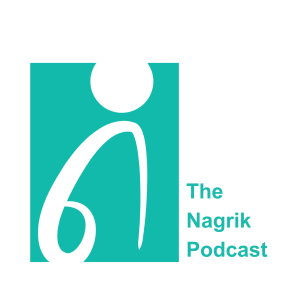
Monday Aug 10, 2020
Justice after large-scale violence: Gagan Sethi, Akram Akhtar Choudhary, Mishika Singh
Mishika Singh is a Delhi-based lawyer, one of many who responded to calls for legal assistance following the riots of February 2020. 53 people, official figures say, lost their lives. In nearly all cases where violence was targeted at Muslims, the police remained mute spectators, even when it led to death.
What is the role of the public-spirited lawyer after large scale violence is directed at a community? History shows us two intertwining paths. The first is to fix responsibility on the perpetrators of the violence through the criminal legal system. The objective then is to ensure that those who caused the violence are tried and punished. The other is to ensure that those who were injured or lost members of their families, or their homes or businesses, are compensated and supported to return to a life similar to the one they lived previously. In both sets of legal remedies, the odds are stacked high against the victims.
Gagan Sethi walked down these intertwining paths in the aftermath of the violence in Gujarat in 2002. He is the founder of Janvikas, a development support and training organisation, and the Centre for Social Justice, an initiative for human rights and access to justice.
Akram Akhtar Choudhary, an activist, was pursuing his law degree in New Delhi, when clashes between Hindu and Muslim communities in and near the Muzaffarnagar district of Uttar Pradesh in August and September 2013, resulted in at least 62 deaths. He would pause his legal education to return home to support the victims through the Afkar India Foundation, which he established.
In this episode of the Nagrik Podcast, we learn from the methods of Gagan Sethi in Gujarat following the violence in 2002 and Akram Akhtar Choudhary in Uttar Pradesh following the riots of 2013. We also observe as Mishika Singh takes the initial steps in her journey to wrest compensation from an insensitive bureaucracy, for the victims of Delhi's communal violence of 2020.
Additional Information
Jeffrey Gettleman, Sameer Yasir, Suhasini Raj and Hari Kumar, New York Times, "How Delhi’s Police Turned Against Muslims"
Hannah Ellis-Petersen and Shaikh Azizur Rahman, The Guardian, "Delhi's Muslims despair of justice after police implicated in riots"
Deutsche Welle, "Delhi riots: Victims struggle to rebuild their lives"
Asmita Nandy, The Quint, "4 Months Since Delhi Riots, Victims Await State Govt Compensation"
United Nations OCHA Guiding Principles on Internal Displacement
Walter Kalin, "Video - Treatment of Internally Displaced Persons under International Law"
A.G. Noorani, Frontline, "Gujarat's internal refugees - review of Sanjeevini Badigar Lokhande's Communal Violence, Foreced Migration and the State - Gujarat Since 2002"
Indian Express, "What is Bilkis Bano gangrape case?"
Soutik Biswas, BBC, "Has Gujarat moved on since 2002's riots?"
Amnesty International, "The state must ensure redress for the victims: A memorandum to the Government of Gujarat on its duties in the aftermath of the violence"
BBC, "Muzaffarnagar: Tales of death and despair in India's riot-hit town"Pritha Chatterjee, Indian Express, "Muzaffarnagar relief camp: ‘We watch our children make it from one night to the next’"
The Hindu, "33 children died in Muzaffarnagar relief camps"
No comments yet. Be the first to say something!